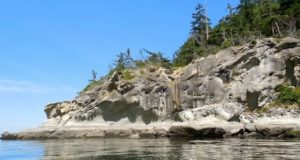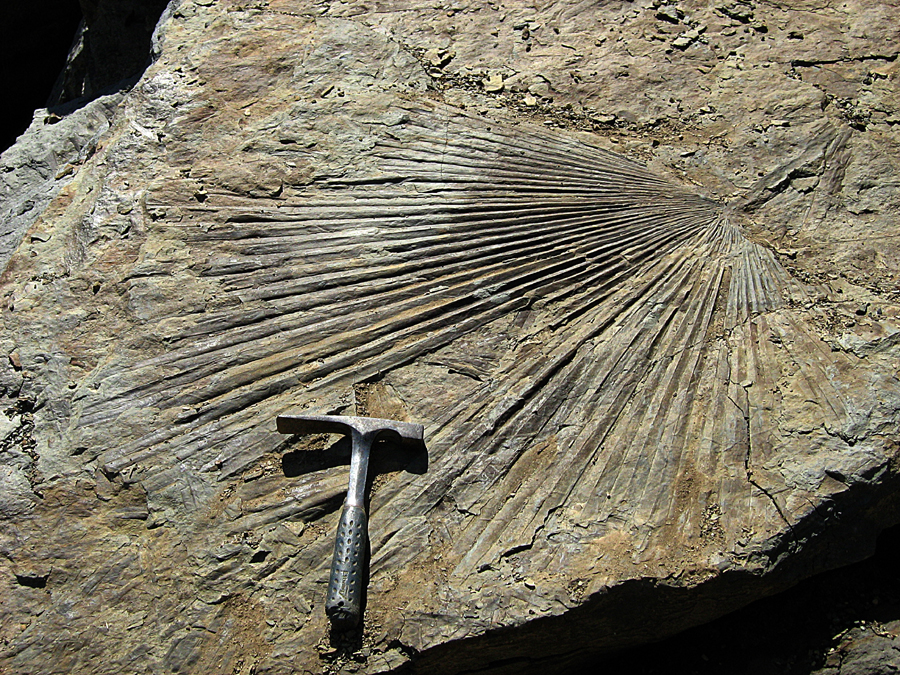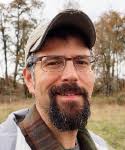
Washington’s fossil footprints—Tracking birds and beasts of a bygone era
The Lecture
 The Chuckanut Formation is one of North America’s thickest sequences of non-marine sediment. It was deposited by a meandering river that flowed westward across Washington at a time when the Cascade Range had not yet been created. The strata accumulated to a thickness of at least 6,000 meters (20,000 ft). The oldest beds were deposited in the late Paleocene, but most deposition occurred in the early Eocene.
The Chuckanut Formation is one of North America’s thickest sequences of non-marine sediment. It was deposited by a meandering river that flowed westward across Washington at a time when the Cascade Range had not yet been created. The strata accumulated to a thickness of at least 6,000 meters (20,000 ft). The oldest beds were deposited in the late Paleocene, but most deposition occurred in the early Eocene.
The warm early Cenozoic climate allowed subtropical rainforests to flourish. Abundant plant fossils in the Chuckanut include fronds from palms, tree ferns, and diverse array of other plants. Beginning in the 1990s, tracks of birds and animals were found in its outcrops in the Mount Baker foothills east of Bellingham, Washington. Twenty years of collecting has resulted in the discovery of a multitude of fossil tracks that were produced by birds, reptiles, and mammals. This presentation will describe and illustrate these discoveries.
The Speaker
 George Mustoe was born and raised in Nevada, arriving in Bellingham with his family at the formative age of 15. After some years at WWU getting educated as a geochemist, he eventually made a switch to paleontology as his main research interest. George has published close to 100 peer-reviewed journal articles that span a range of geoscience topics—a publication record that he cites as evidence of wide-ranging scientific interests or maybe just a short attention span. Following his retirement in 2014, George became a Geology Research Associate at WWU where he continues his pursuit of paleontology.
George Mustoe was born and raised in Nevada, arriving in Bellingham with his family at the formative age of 15. After some years at WWU getting educated as a geochemist, he eventually made a switch to paleontology as his main research interest. George has published close to 100 peer-reviewed journal articles that span a range of geoscience topics—a publication record that he cites as evidence of wide-ranging scientific interests or maybe just a short attention span. Following his retirement in 2014, George became a Geology Research Associate at WWU where he continues his pursuit of paleontology.


